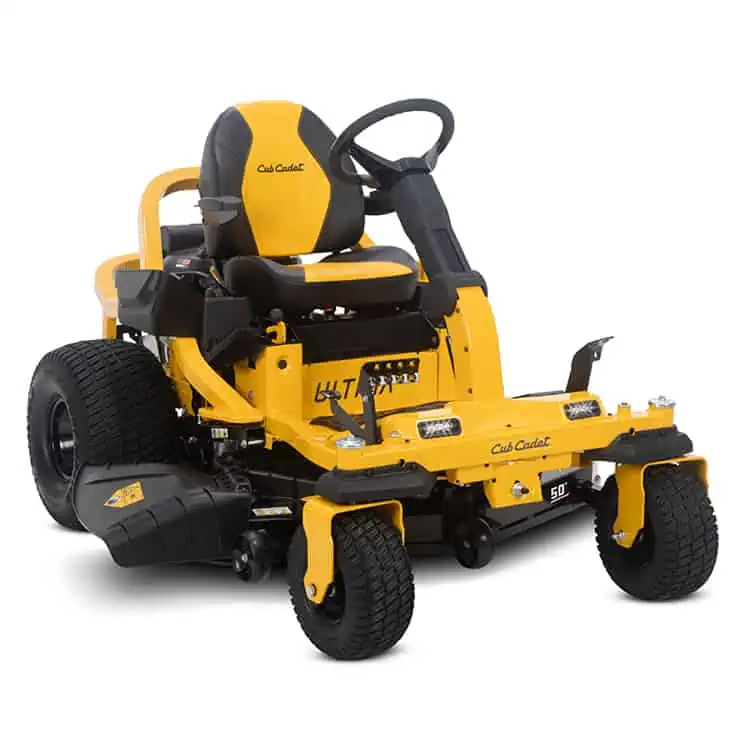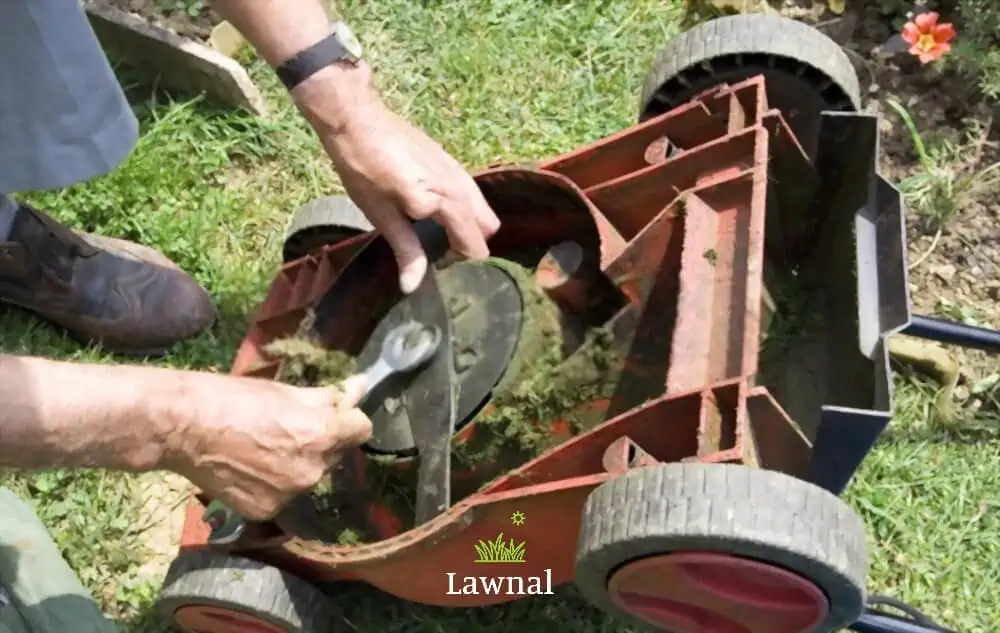Riding Mower Blowing White Smoke When Blades Are Engaged
A well-maintained riding mower is essential to keep your lawn looking its best. But, if your riding mower blows white smoke when the blades get engaged, it’s a sign that something is wrong.
In this article, we’ll discuss the causes of this problem and offer some troubleshooting tips to help you fix it.
Why your Riding Mower Blowing White Smoke When Blades Get Engaged
Understanding the causes of a riding mower blowing white smoke when blades are engaged is the first step toward the repair. Below are some major causes of this problem and how you can address it.
Damaged Piston Rings
Worn or damaged piston rings can cause a riding mower to blow white smoke when the blades get engaged. Oil may leak into the combustion chamber and ignite if the piston rings have worn out, producing white smoke.
To examine the functionality of the rings, a mechanic might do a compression test.
Dirty Air Filter
When the blades get engaged, a dirty air filter is among the major causes of white smoke. If the air filter is unclean or blocked, the engine may have issues and produce white smoke. If the air filter is unclean, change it.
Faulty Carburetor
A faulty carburetor can cause a riding mower to emit white smoke when the blades engage. White smoke produced by a rich or low engine may result from a damaged carburetor.
An auto technician may check the carburetor and perform any required maintenance.
Leaking Head Gasket
When the blades get engaged, a leaking head gasket is another potential cause of white smoke. White smoke can result from coolant leaking in the combustion chamber due to a burst head gasket.
A frothy look or a pleasant scent in the oil may indicate the presence of coolant.
Overfilled Oil
Finally, overfilling the oil in a riding mower can cause the engine to emit white smoke. When the oil level becomes too high, it might enter the engine and generate white smoke. Inspect the oil level and, if required, dispose of some.
Essential Tools Needed for Diagnosing This Issue

Diagnosing a riding mower that blows white smoke when blades get engaged requires specific tools. The right tools can make the process much easier and ensure an accurate diagnosis.
Compression Gauge
A compression gauge is essential for diagnosing white smoke issues in a riding mower. This tool measures the engine’s compression and helps determine if the issue is related to the engine’s internal components.
Knowing if the engine is operating in good condition is challenging without a compression gauge.
Spark Plug Wrench
A spark plug wrench is necessary for removing and inspecting the spark plugs in a riding mower. The spark plug plays a crucial role in the engine’s performance, and a faulty spark plug can cause white smoke issues.
Furthermore, the spark plug wrench will help you easily remove and inspect the spark plugs.
Oil Dipstick
Checking the oil level is critical when diagnosing a riding mower that blows white smoke when the blades get engaged. An oil dipstick is an essential tool for checking the oil level in the engine.
Low oil levels can cause engine overheating, leading to white smoke.
Fuel Pressure Gauge
A fuel pressure gauge is another tool that can help diagnose a riding mower that blows white smoke when blades get engaged. This tool measures the fuel pressure in the fuel system and can identify issues such as an obstructed fuel filter or a fouled fuel pump.
Preventive Maintenance Tips
Preventive maintenance is essential to keep your riding mower running and avoid costly repairs. Below are some tips you can observe to avoid white smoke when blades get engaged.
Regular Oil Changes
Regular oil changes are essential in ensuring that your riding mower keeps running. When blades get engaged, old or dirty oil can cause engine problems, including white smoke.
Maintain the oil level at the recommended level and change it as directed by the manufacturer’s instructions.
Clean or Replace Air Filter
A dirty air filter can restrict the airflow to the engine, causing white smoke and other engine problems. Frequently check the air filter and replace it if it becomes clogged or dirty.
Check and Adjust the Oil Level
Overfilled or underfilled oil levels can cause white smoke when blades get engaged. Ensure to keep the oil level at the appropriate level to keep everything in check.
Replace Worn Spark Plugs
Worn spark plugs can cause poor engine performance, including white smoke when blades engage. Therefore, check the spark plugs to ensure they are in great condition. Replace them immediately if you notice any issues.
Check the Fuel Filter
When blades get engaged, a clogged fuel filter can cause poor engine performance and white smoke. Use only clean, high-quality gasoline, and drain the tank regularly to prevent water or debris from entering the fuel system.
Keep Blades Sharp and Balanced
Dull or unbalanced mower blades can cause white smoke and other engine problems. This damage is due to the extra work the engine has to do to cut. Therefore, ensure that you regularly sharpen the blades before use.
Regular Maintenance Checks
Regular maintenance checks can help you identify and prevent potential issues before they become serious problems. Implement the outlined maintenance plan provided by the manufacturer for oil changes, tune-ups, and other essential maintenance procedures.
Factors to Consider When Seeking Professional Help
While you can fix some issues with simple maintenance, others may need professional help. Here are some essential factors to note when in search of professional service for a white smoke issue:
Choosing the Right Professional Service
When seeking professional help for a white smoke issue, choosing a reputable and experienced lawn mower repair service is essential. Look for a service with a good reputation in your local community, offers transparent pricing, and provides a warranty on their repairs.
Complex Repairs
Some white smoke issues may need complex repairs beyond a DIY enthusiast’s scope. Examples may include a faulty engine valve or a blown head gasket. If you don’t have experience performing such repairs, it’s best to seek professional help to avoid causing further damage.
Lack of Time or Resources
If you lack the necessary tools and resources or are short on time to diagnose and repair the issue, it’s best to seek professional help. A professional repair service can often diagnose the issue and have your riding mower back up and running quickly.
Safety Concerns
Working on a riding mower can be dangerous, especially with engine components. If you’re unsure about your ability to perform the repairs, it’s best to seek professional help. An experienced technician has the necessary training and equipment to perform repairs.
The Issue Persists After DIY Troubleshooting
If you’ve attempted to troubleshoot and fix the white smoke issue, but it persists, it may be time to seek professional help. An experienced technician can provide a more in-depth diagnosis of the issue and recommend the best course of action to fix it.
Conclusion
A riding mower blowing white smoke when blades engage can signify a significant problem. But, with this article’s troubleshooting tips and maintenance advice, you can identify and resolve the issue as quickly as possible.
Remember to schedule regular maintenance to keep your mower running and avoid future issues.






